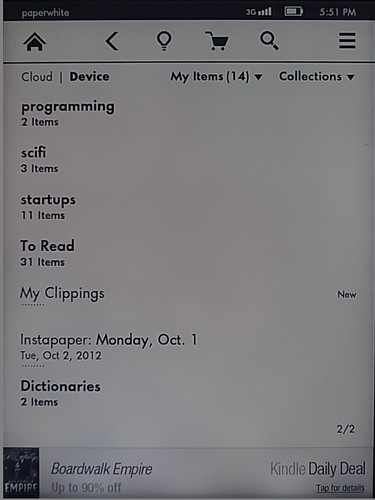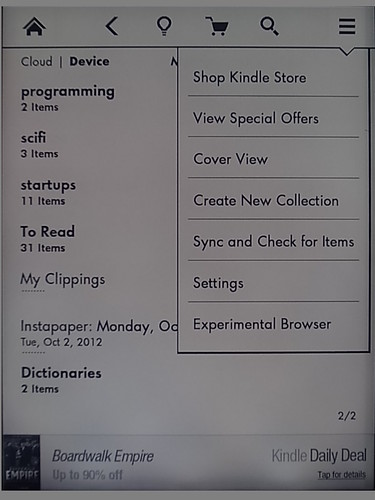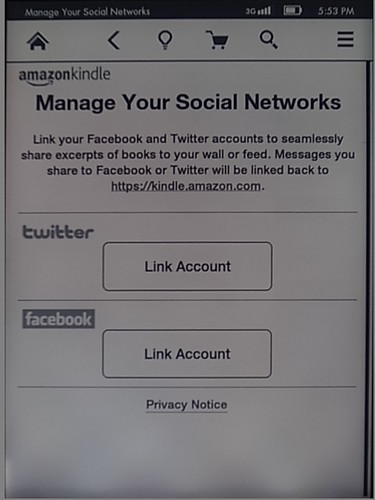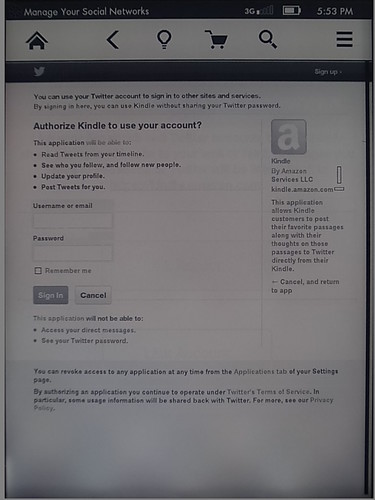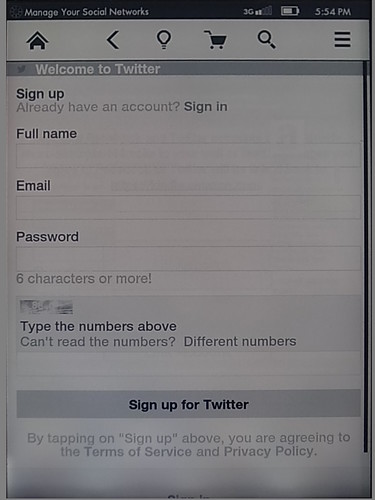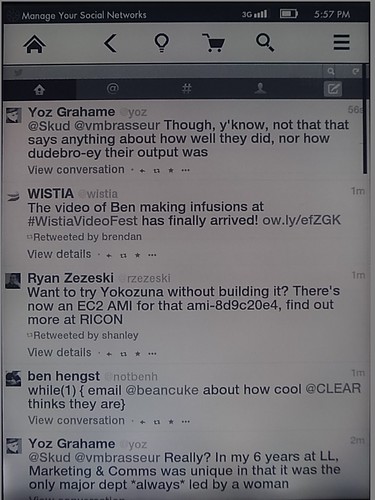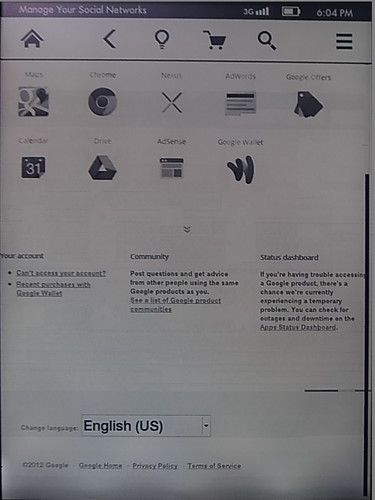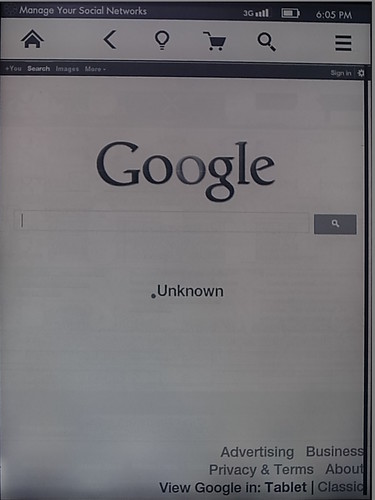3G Web Browsing on the Kindle Paperwhite
Last night, I was playing around with my new 3G Kindle Paperwhite. (I earn a few bucks if you buy from Amazon after clicking links to Amazon in this blog post)
(It is, in fact, the nicest kindle I have ever owned. The new screen is gorgeous. The touch screen is responsive. Large parts of the UI are just HTML5 apps, which means that the system is quite flexible. Sometimes more flexible than intended. When the Kindle Touch first got pwned, it was through the music player app, which didn't escape JavaScript in ID3 tags.)
One of the things that bums me out about the Kindle Touch and Kindle Paperwhite is that they don't support browsing over 3G. It's a feature I used rarely on my Kindle 2 and Kindle 3. But when I needed it, I really, really needed it.
So yeah. Last night, I was playing with my new Kindle Paperwhite 3G.
I clicked the menu button.
I clicked "Settings"
I clicked "Reading Options"
Then I clicked on "Social networks"
Then I clicked on "Link my account to Twitter" and got a very familiar OAuth login page.
It was at about this point that I remembered what I'd seen poking around inside the Kindle Touch's UI toolkit. Different applications were basically implemented as little webkit containers with different local and remote permissions. The browser's container was, for example, configured to let you reach Amazon and Wikipedia over 3G and to require WIFI for everything else.
Now, this "Manage Your Social Networks" app pretty clearly lets you get to Twitter and Facebook (and Amazon), but how locked down is it?
To make a long story short, it's about as locked down as a 1999-era web kiosk.
Back in the early days of the web, people didn't have web browsers in their pockets, so "web kiosks" were a frequent sight in forward-thinking public locales like libraries and corporate lobbies. They were invariably locked down. You couldn't launch Telnet or download a copy of Snood. In fact, they were mostly set up to only let you browse a single website. The usual mechanism for this fascist policy was to use a hacked up web browser without a URL bar. Sometimes, you were just out of luck. More often, you got to demonstrate your l33t sk1llz at a game called "clicks to Yahoo!" or its more nefarious sibling -- "clicks to porn." Somewhere on every website is a link to another website. Back in the day, an easy target was a "best viewed in Netscape 3.0" or "Best viewed in Internet Explorer" button - from netscape.com, you could get anywhere.
Today, well, today you have many options. My first path through this game led me from http://kindle.amazon.com to http://amazon.com/ to http://www.woot.com to http://reddit.com. From reddit, you can get just about anywhere, though you might have to endure more mindless yammering than you'd like. For my proper demo, I went for something a bit more useful (if via a slightly more circuitous route.)
Rather than signing in to Twitter to let Amazon tweet on your behalf, break the flow by clicking the little bird in the upper left corner.
Then click "Sign in"
Scroll to the bottom of the page and search for @google
Click on @google's profile
Click on the URL to get to Google Support.
Scroll to the bottom of the page and click "Google Home"
Google something.
Now, I don't mean to suggest that this turns the Kindle Paperlight into a useful 3G web browser, but when you're desperate, you're desperate.
(Also, if you're just trying to read Twitter or Facebook, it's actually not that painful.)
Enjoy!
